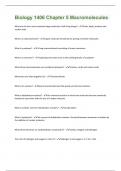Samenvatting
Complete samenvatting van alle collegestof + quizvragen
- Vak
- Neuropsychology
- Instelling
- Radboud Universiteit Nijmegen (RU)
Complete samenvatting met veel verhelderende afbeeldingen. Ik heb zelf een 7.5 gehaald door het leren van deze samenvatting.
[Meer zien]












